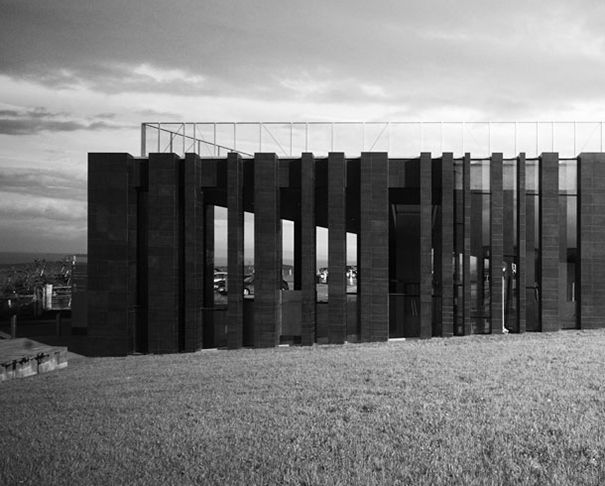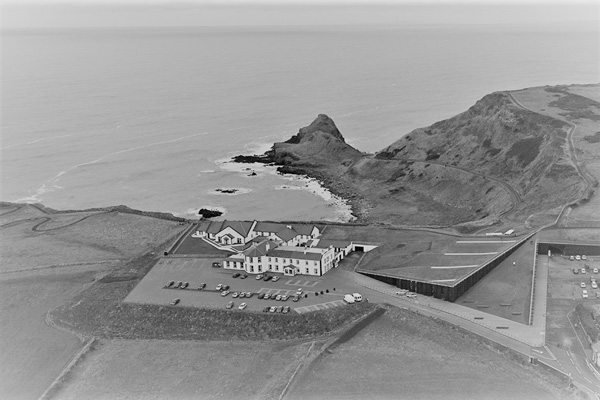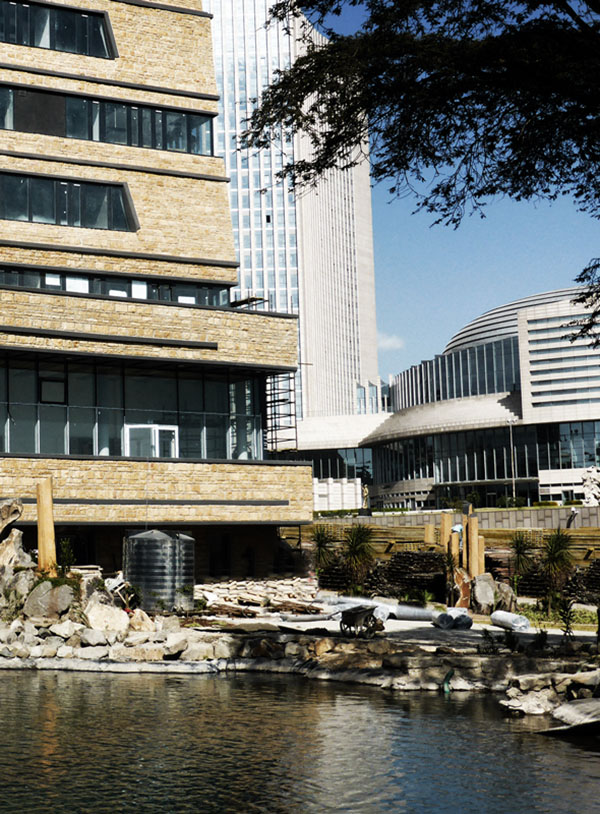Good design is both functional and environmentally friendly.
Burgkunstadt, Germany
Influential design. For years, product designer Marco A. Mueller has been shaping the appearance of electronic style icons. When building his home, he had the same high demands in terms of design and functionality.
Challenge / As a designer, Marco Mueller had clear ideas of what he wanted from a house. In André Rösch he found the perfect architect who immediately understood his way of thinking when it comes to form and function. Together they came up with a simple rectangular structure with two floors in a wood stand construction. Wood, metal, glass, open spaces.
Solution / When it came to choosing the manufacturer, System M was quickly selected, and not just because it was recommended by the architect. The entire heating and cooling package was simply so impressive.
Sustainable lifestyle.
Redwitz, Germany
Back home. After many years spent in various metropolises around the world, architect André Rösch has returned home to Upper Franconia and is fulfilling his dream of living and working sustainably under one roof.
Challenge / In 2017, Rösch bought a dilapidated 19th century barn close to his parents’ house in Redwitz an der Rodach. He then set about converting it into a home and office in line with the latest ecological findings. The plan was for the heating system to be ideally suited to the architecture and surrounding area.
Solution / He chose the energy-efficient System M Comfort heat pump. The casing of the outdoor unit in larch wood fits perfectly with the rest of the ensemble.
Weekend house.
Weil, Germany
A love of the countryside. Munich resident Corinna Brix loves being out in the country. Together with her family, this successful photographer and stylist has created a refuge from the daily grind, well away from the hustle and bustle of the city.
Challenge / A residence in the countryside for weekend and holiday breaks. A large plot that included a 100 year-old mill provided enough space for a 150 m² weekend house. Where construction and interior design were concerned, a focus was intentionally placed on ecological materials and sustainability.
Solution / Fossil fuels were out of the question for the Brix family when considering an environmentally sensitive issue like heating, After extensive research, they made a definitive choice in favour of System M Compact, which offers a heat output of 6 kW and a 180 l domestic hot water cylinder. Performance, efficiency, quality, noise levels, design and simple operation were all key criteria for their decision.
System benefit / The investments made in the system were paid off within five years and by using air as the heat source, the system is very environmentally friendly as well.
Family home.
Oberviechtach, Germany
We heat and ventilate sustainably. Clean lines, plenty of glass, refined internal axes and external vistas – all in an open-plan concept. This modern family house in eastern Bavaria sets new standards not just in architecture but in energy efficiency as well.
Challenge / The family of four required a sustainable energy concept – heating, hot water and a powerful ventilation system – for an almost air-tight house with excellent insulation. The better a building’s exterior is sealed, the more important it is to control its aeration and ventilation. That’s the only way to ensure that the house doesn’t sweat and that it stays pleasant inside.
Solution / The 220 m2 family house is heated by a Dimplex LA 17TU heat pump, which also supplies the hot water. The central ZL 400 ventilation system from Dimplex ensures ample fresh air in every room, round the clock and extremely hygienically.
System benefit / 70% less energy consumption than oil heating and 30% lower CO2 emissions. Year in, year out.
Historical villa.
Ingelheim, Germany
We heat indoors and out. This imposing two-story villa in Rhineland-Palatinate was built in 1800 and lovingly restored in 2012, inside and out. The goal was to retain as much of the old fabric of the building as possible and to emphasise its architectural features.
Challenge / It wasn’t just the interior of the house that required efficient, environmentally friendly heating – the koi pond in the garden also had to be kept at the right temperature. Koi carp are highly sensitive to temperature fluctuations, so the water temperature had to be as stable as possible.
Solution / A powerful, high-temperature brine-to-water water and heat pump from Dimplex provides hot water for the house and heats the 430 m² living space as well as the koi pond. The existing radiators were retained, meaning shorter renovation time and lower installation costs. By activating a second compressor, the heating power can be quickly increased from 11.5 kW to 21.4 kW if necessary.
System benefit / 55% less energy consumption than oil heating and 52% lower CO2 emissions.
OffTEC.
Enge-Sande, Germany
We heat the tides. Offshore wind farms on the high seas are major suppliers of green electricity. However, building and maintaining them is an enormous challenge. In North Frisia, OffTEC ensures that employees working in offshore wind farms are prepared for the extreme working conditions they encounter. For example, with artificially generated waves more than two metres high.
Challenge / Sustainability was a must. The new heating concept should use energy from the nearby wind farm and a solar plant to heat 2,000 m3 of North Sea water and service water every day, as well as heating two halls.
Solution / After a geological survey established that the company premises were located on a sand dune, which ruled out drilling boreholes, Dimplex knew that air-to-water pumps were the only way to go.
System benefit / Eight devices, connected in series and divided between two temperature zones, enable the varying heating requirements of the new and existing structures to be met with maximum efficiency.


Stäubli Assembly Hall
Germany
We heat and cool in integrated networks.
The town of Bayreuth, in north-eastern Bavaria, is home not just to the world-famous annual festival of Richard Wagner’s operas but also to the Swiss technology company Stäubli.
Challenge / In winter the 1,800 m² Visitor Centre has to be kept warm – sustainably and at low cost. The operator, National Trust, also wanted a passive cooling function for the summer months.
Solution / Rather than just one high-performance heat pump, three brine-to-water heat pumps with lower outputs were installed, resulting in particularly impressive partial load operation behaviour. A horizontal collector was installed beneath the parking lot to act as a heat or cooling exchange as required, connected to the building via a brine-to-water heat pump.
System benefit / Sustainable, stable temperatures and outstanding efficiency.
Schloss Emsburg.
Salzburg, Austria
We heat historic monuments. Schloss Emsburg nestles in grounds that extend over eight hectares. Built in 1619, the diminutive palace has seen a few owners since then, from a princely bodyguard to a Franciscan community. Since 2010 it has been in private hands.
Challenge / The project called for a high-performance heating system that was both efficient and quiet for the main building and the six auxiliary buildings. It also had to conform to a host of heritage requirements. That meant, for instance, retaining the existing radiators to keep the impact of the renovations to a minimum.
Solution / With four brine-to-water heat pumps using ground water as a heat source via probes, Dimplex guarantees a high flow temperature of 70 °C for the radiators
System benefit / Dimplex created an environmentally friendly, heritageappropriate solution – without major building works.


Giant’s Causeway Visitor Centre.
Ireland
We can do both active and passive. It was a giant that deposited the 40,000 or so almost identical basalt pillars that form Northern Ireland’s famous five-kilometre causeway – at least according to an old Irish legend. That’s why it bears the name Giant’s Causeway to this day. The volcano that actually wrought this wonder 60 million years ago has long since disappeared. In 2010, however, the UNESCO World Heritage site was provided with a new Visitor Centre.
Challenge / In winter the 1,800 m² Visitor Centre has to be kept warm – sustainably and at low cost. The operator, National Trust, also wanted a passive cooling function for the summer months.
Solution / Rather than just one high-performance heat pump, three brine-to-water heat pumps with lower outputs were installed, resulting in particularly impressive partial load operation behaviour. A horizontal collector was installed beneath the parking lot to act as a heat or cooling exchange as required, connected to the building via a brine-to-water heat pump.
System benefit / Sustainable, stable temperatures and outstanding efficiency.

Grand Theatre.
Shanghai, China
We wow Shanghai. In 1998 the modern building complex of the Shanghai opera house with its swooping roof opened its doors for the first time– and immediately became a landmark of the city. With three performance spaces and a total of 2,700 seats, the theatre is one of the biggest in the People’s Republic of China.
Challenge / The heating system for the 12,000 m² building not only had to ensure ideal temperatures with maximum efficiency, but also be visible to theatre visitors and part of the dramatic setting.
Solution / Eight reversible brine-to-water heat pumps operating in tandem, each with two compressors, provide optimal interior conditions throughout the year. The hydraulic connectors and the entire pipework of the heating and cooling system was clad in stainless steel and lit up, giving visitors a spectacular view of the opera house’s heating system.
System benefits / Perfect temperatures, regardless of whether it’s a full house or the summer break – with outstanding heating and cooling performance.
Greenhouses.
Hokkaido, Japan
We ensure the right weather. The northern part of the island of Hokkaido is not just home of the eponymous pumpkin, it is also the country’s main supplier of rice and potatoes. But the climate is a challenge to anyone growing plant crops: winter temperatures can drop to –12 °C, while in summer the mercury tops out at 22 °C.
Challenge / However extreme the outside temperature, the greenhouses have to maintain a constant temperature of 22 °C. The large-scale agricultural concern Hokkaido Green House Co. Ltd. wanted to replace its old kerosene burners with modern heat-pump technology – and in so doing save as much on energy and operating costs as possible.
Solution / After testing various alternatives, the favoured device also turned out to have the lowest energy consumption: air-to-water heat pumps in combination with brine-to-water heat pumps, plus waste heat recovery.
System benefit / Reliable, environmentally friendly heating, even when it’s –12 °C outside.

Peace and Security Building.
Ethiopia
We use every source of energy. Addis Abeba, the capital of Ethiopia, is home to both the African headquarters of the UN’s Economic Commission and the African Union. Since 2013 the African Union, so vital for the continent and its ongoing development, has had a new Peace and Security Building – a gift from Germany.
Challenge / The building needed to provide comfortable temperatures for over 360 staff members throughout its 13,500 m² of office space. A fire pond in the garden was also pegged as an energy source.
Solution / Key components of the sustainable heating and cooling concept were the two sprinkler tanks, one with 100 m³ of water and the other with 140 m³. One tank is used as a cold water source in summer, the resulting waste heat being transferred to the other tank to be used as a heat reservoir for heating. A collector in the pond also helps the building cope with peak loads.
System benefit / Site-specific factors such as the fire pond were integrated and used in an optimal fashion to increase efficiency.
Very Large Telescope, ESO.
Paranal Observatorium, Chile
We provide precision cooling in earthquake zones. In the middle of northern Chile’s Atacama Desert, four 22-watt lasers create artificial guiding stars. They serve to balance out the optical blurring that arises from the Earth’s atmosphere, ensuring sharper images for the telescope.
Challenge / The laser sources require compact, low-vibration cooling inside a temperature-neutral exterior, which should get by with as little maintenance as possible and provide leakage monitoring in case the worst comes to the worst. Earthquake and frost protection are essential in this region of South America.
Solution / A cooling system that is so safe and lowmaintenance that it can be run without intervention for two years at a stretch – a big advantage in a region far from major transport routes. Special features help achieve this goal, such as the insulating material that doesn’t swell despite an altitude of over 2,500 metres. The low-vibration construction prevents earthquakerelated outage, while the brine pump and fan are speed-regulated to compensate for any resonance vibrations on site.
Very Large Telescope, ESO.Exact cooling: the inner temperature of the device has a maximum deviation of +/–1 Kelvin relative to the ambient temperature.
